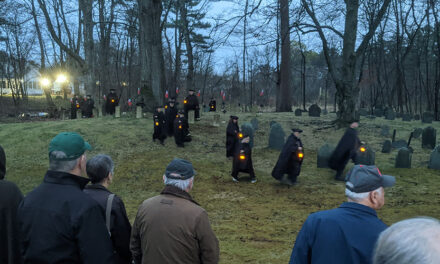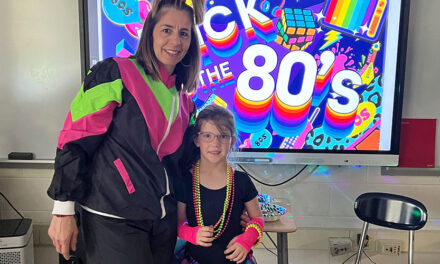Published in the August 31, 2016 edition
By DAN TOMASELLO
LYNNFIELD — Boston Magazine recognized Lynnfield High School for being one of the top 155 high schools in the Greater Boston area this week.
The high school was ranked 27th by the publication. Boston Magazine ranked LHS as the 36th best high school in 2014.
High School Principal Bob Cleary was pleased Boston Magazine recognized the high school once again.
“We are flattered to be recognized, but we couldn’t do it without the hard work of our staff and students and the support of the community,” said Cleary. “It’s a nice accolade for the district because we get kids who have been well prepared by the middle school and elementary schools.”
Superintendent of Schools Jane Tremblay agreed.
“It’s always nice to be recognized for the hard work that our faculty, staff, administration and students put in every day,” said Tremblay.
Dover-Sherborn Regional High School was ranked first by Boston Magazine. Lexington High School was second. Weston High School was third. Wayland High School was fourth and Newton South High School was fifth.
According to Boston Magazine, LHS has 646 students enrolled. The high school’s average class size contains 16 students. LHS’ average student-teacher ratio is 12.0.
The publication revealed 99 percent of high school sophomores scored either proficient or above on the MCAS English exam. According to Boston Magazine, 95 percent of sophomores received proficient or higher scores on the MCAS math exam. The publication said 95 percent of freshmen received proficient or higher scores on the MCAS science exam.
According to Boston Magazine, Lynnfield High School’s average SAT reading score was 537. The publication revealed the high school’s average SAT writing score was 544. The high school’s average SAT math score was 562.
The publication revealed 82.8 percent of high school students who took an Advanced Placement (AP) exam scored between a 3-5. AP exams are graded on a 5-4-3-2-1 numeric scale, with 5 being the highest and 1 being the lowest. Generally, scores of 3 or above will result in advanced standing or college credit for incoming freshmen. Scores of 1 and 2 do not merit college placement. According to College Board, many colleges and universities grant credit and placement for scores of 3, 4 and 5 but each college ultimately determines which scores it will accept.
According to Boston Magazine, the high school has three guidance counselors and 22 athletic teams. The publication revealed LHS has a 100 percent graduation rate.
The high school surpassed several neighboring and rival high schools in the rankings. Masconomet was ranked 30th by Boston Magazine. Marblehead High School was 33rd. Hamilton-Wenham was 36th. Swampscott High School was 39th. Ipswich High School was 40th. Newburyport High School was 41st. Reading Memorial High School was 42nd. Andover High School was 43rd.
Stoneham High School was 53rd. North Reading High School was 55th. Wakefield Memorial High School was 58th and North Andover High School was 59th.
Methodology
Boston Magazine ranked public high schools in towns or districts that lie within, or partially within, the I-495 corridor.
According to Boston Magazine, the publication used the most recent data for each school available at press time from the Department of Elementary and Secondary (DESE). In the event there was missing information, Boston Magazine “used data from a previous year when necessary.” The publication “omitted highly specialized schools and schools reporting insufficient information.”
In order to calculate the rankings, Boston Magazine used statistician George Recck, who is the director of the Math Resource Center at Babson College. The publication said Recck “analyzed the results” and compared each high school’s data points to the overall average for all schools. Recck then applied a percentage weight to the standardized value for each school to create an aggregate “score.” The score was used to determine each high school’s ranking.
Additionally, Boston Magazine “considered it more desirable to have a smaller class size, a lower student-to-teacher ratio and fewer students per college counselor and sports team.”




